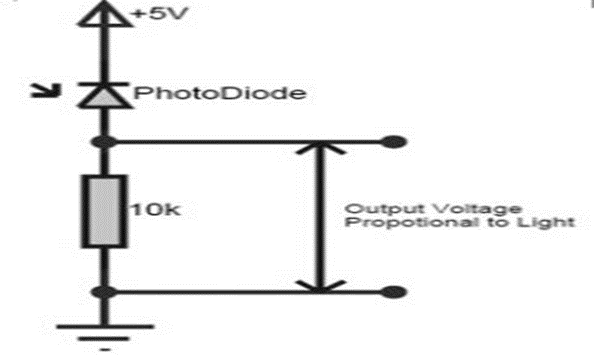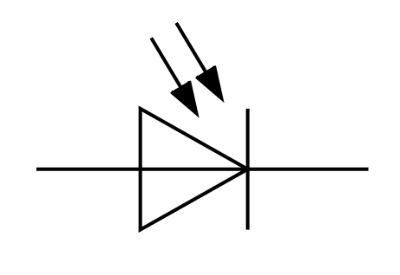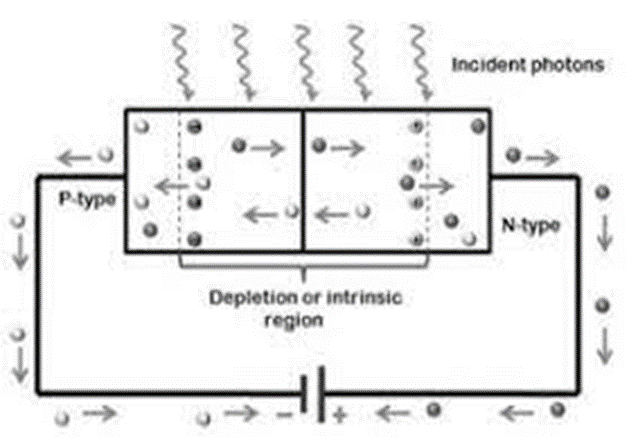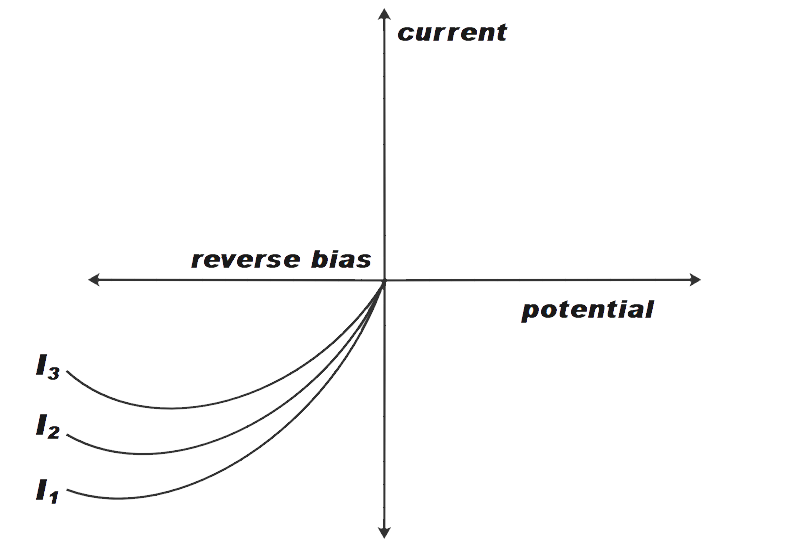Photodiode is a device used to detect light and convert light energy into electrical energy. It is operated in reverse bias below the breakdown voltage
What is photodiode?
The symbol of photodiode is similar to the normal p-n junction diode except that it contains arrows striking the diode. The arrows striking the diode represent light or photons.
Some photodiodes will look like a light-emitting diode. They have two terminals coming from the end. The smaller end of the diode is the cathode terminal, while the longer end of the diode is the anode terminal. See the following schematic diagram for the anode and cathode sides. Under the forward bias condition, the conventional current will flow from the anode to the cathode, following the arrow in the diode symbol. Photocurrent flows in the reverse direction.
The symbol of Photodiode :
The following image shows the symbol of the Photodiode. The symbol of Photodiode is similar to that of an LED, but the arrows points inwards.
Working of Photodiode
A photodiode fabricated with a transparent cover to allow light to fall on the diode’s operated in reverse biased. A photodiode is illuminated with light with energy greatest with the energy gap of the Semiconductor, than electron hole pair are generated due to contributed to the reverse current.
Equivalent Circuit of Photodiode
The circuit diagram of the photodiode is shown below. This circuit can be built with a 10k resistor and photodiode. Once the photodiode notices the light, then it allows some flow of current throughout it. The sum of current that supplies through this diode can be directly proportional to the sum of light noticed through the diode

Characteristics of Photodiode
A photodiode continually operates in a reverse bias mode. The characteristics of the photodiode are shown clearly in the following figure, that the photocurrent is nearly independent of reverse bias voltage which is applied. For zero luminance, the photocurrent is almost zero excluding for small dark current. It is of the order of nano amperes. As optical power rises the photocurrent also rises linearly. The max photocurrent is incomplete by the power dissipation of the photodiode.
Advantages of Photodiode
The advantages of photodiode include the following.
- Less resistance
- Quick and high operation speed
- Long life span.
- Fastest photodetector.
- Spectral response is good.
- Doesn’t use high voltage.
- Frequency response is good.
- Solid and low-weight.
- It is extremely responsive to the light.
- Dark current is less.
- High quantum efficiency.
- Less noise
Disadvantages of Photodiode
The disadvantages of photodiode include the following
- Temperature stability is poor.
- Change within current is extremely little, therefore may not be enough to drive the circuit.
- The active area is small.
- Usual PN junction photodiode includes a high response time.
- It has less sensitivity.
- It mainly works by depending on the temperature.
- It uses offset voltage.
Application of Diode
- Photodiodes are used in safety electronics such as fire and smoke detectors.
- Photodiodes are used in numerous medical applications.
- They are used in instruments that analyze samples, detectors for computed tomography and also used in blood gas monitors.
- Photodiodes are used in solar cell panels. Photodiodes are used in logic circuits.
- Photodiodes are used in the detection circuits.
- Photodiodes are used in character recognition circuits.
Photodiodes are used for the exact measurement of the intensity of light in science and industry.
Also read here


